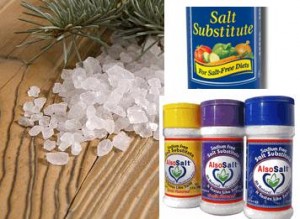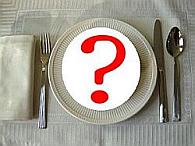When you are on sodium (salt restriction diet) you have the following choices:
Lower your total salt intake – This is the preferred and healthy way to reduce sodium in your diet.
- Reduce your intake of high sodium foods such as in processed foods.
- Add less salt during cooking and at the table.
- Get used to the less salty taste and get more out of the natural flavors from foods and added herbs/spices.
Salt substitute
Most are a potassium chloride source. Some are part sodium chloride and part potassium. Many clients of mine reported a bitter after tastes that they eventually get somewhat used to it. The caution you must take is to talk to you doctor and pharmacist about potassium chloride salt substitutes. Too much potassium in your diet can be very harmful and not suited for everyone. It all depends on what medical conditions you have and what medications you are taking. As far as salt substitute brands AlsoSalt has been mentioned having the best taste.
Sea Salt
There are a lot of discussions about sea salt having less sodium. I am not a chemist but from what I read there is very little difference when it comes to sodium content. The perceived difference is like comparing whole coffee beans verses ground coffee. Sea salt is available in larger crystals than table salt. So when you compare one teaspoon of one with the other, one teaspoon of sea salt would have less sodium than one teaspoon of table salt. But when compared in gram per gram they contain about the same amount of sodium ~380 mg of sodium per gram.
Many people prefer sea salt over table salt. Table salt has additives to prevent caking and is a refined product with trace minerals removed. It does have iodine added and some iodine is necessary for healthy thyroid function. Most of us get enough iodine from eating meat, dairy products or seafood regularly. Many chefs and gourmet cooks prefer using sea salt for the cleaner flavor. Sea salt can offer a range of flavors depending on where it was harvested.
Conclusion: Getting used to the less salty flavor naturally is best in the long run. If you elect to use a salt substitute be sure to check with your doctor. You can try natural sea salt to add variety of flavors but know that sea salt sodium content is about the same as table salt.
See natural herbs/spices salt substitute recipes
Related posts:
Tips for Potassium Restricted Diet
Potassium Sources for High Potassium Diet
Potassium Rich Foods Decrease Health Risks
Foods to Eat for Iodine Sources
Tips for Low Sodium Diet Plan



{ 0 comments… add one now }
{ 5 trackbacks }